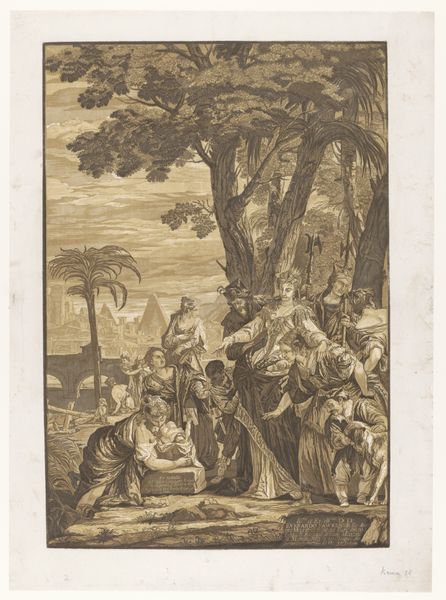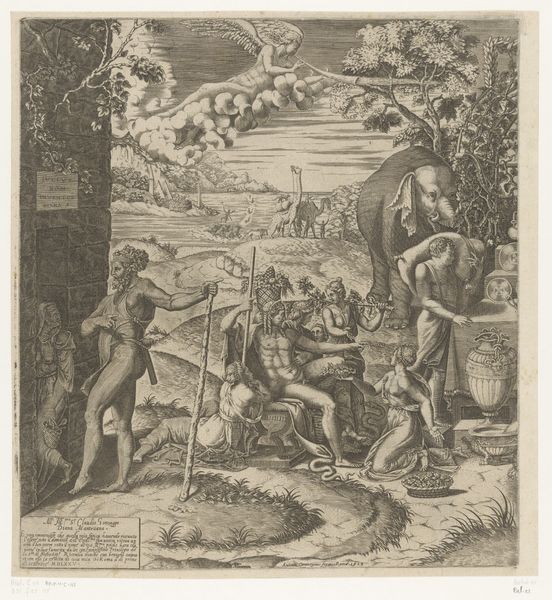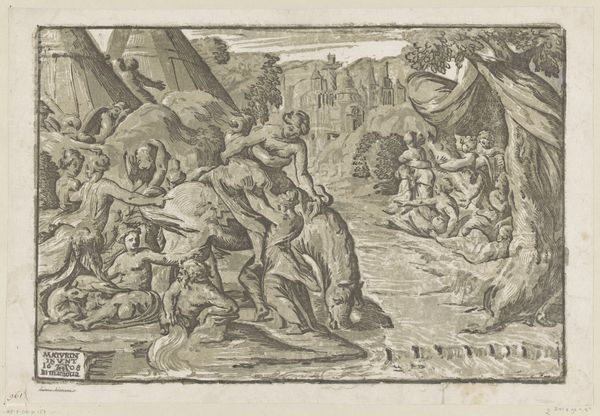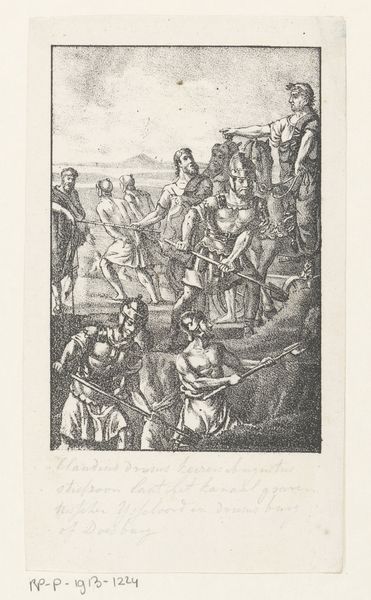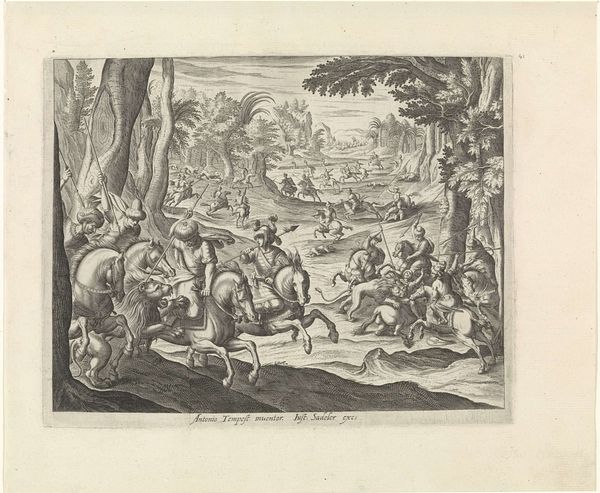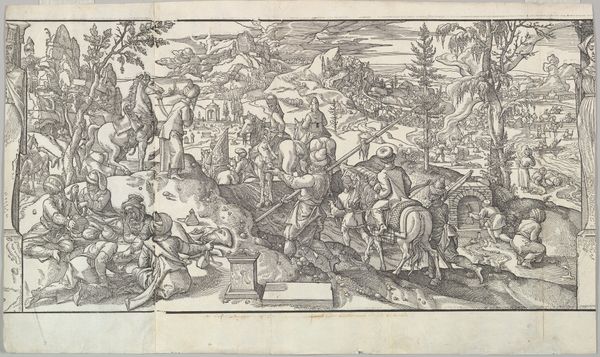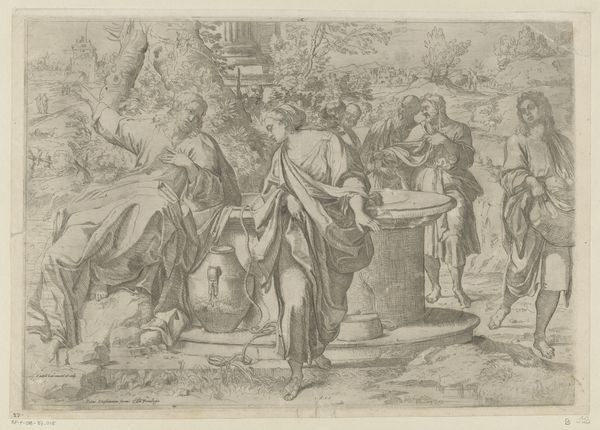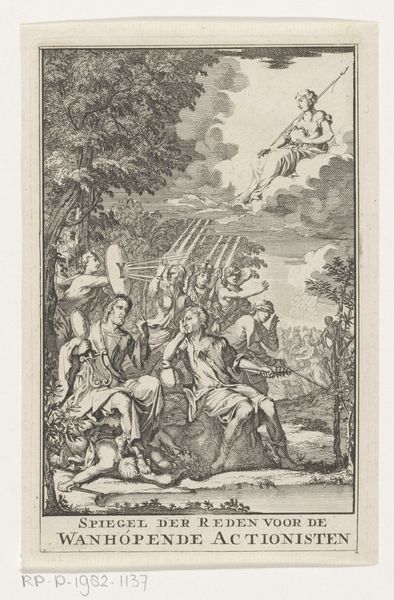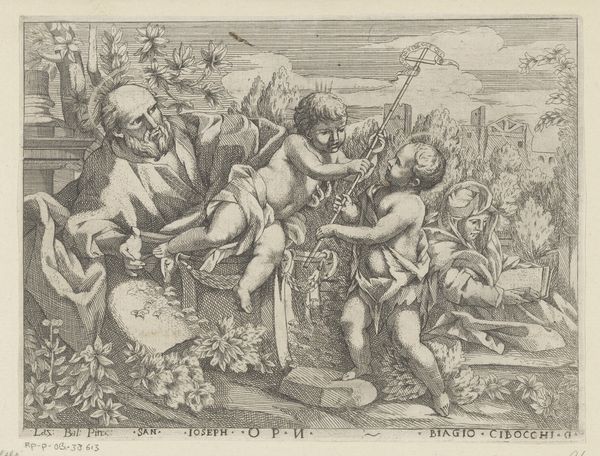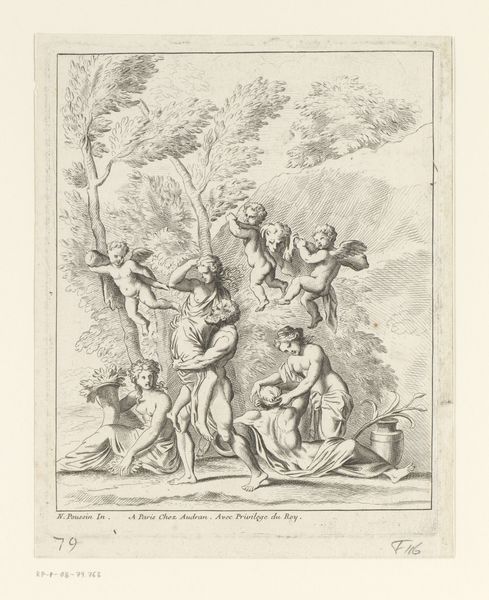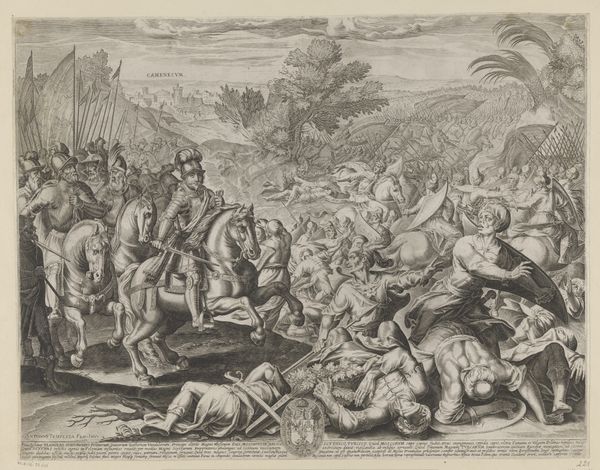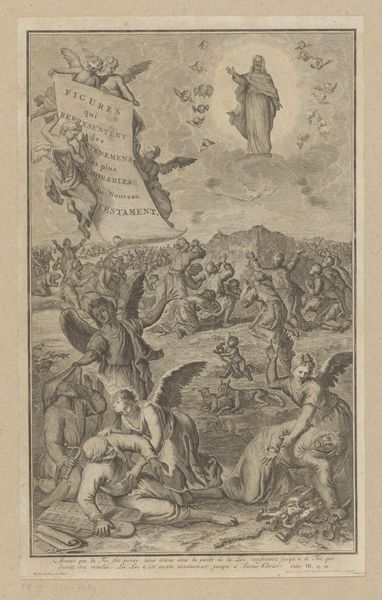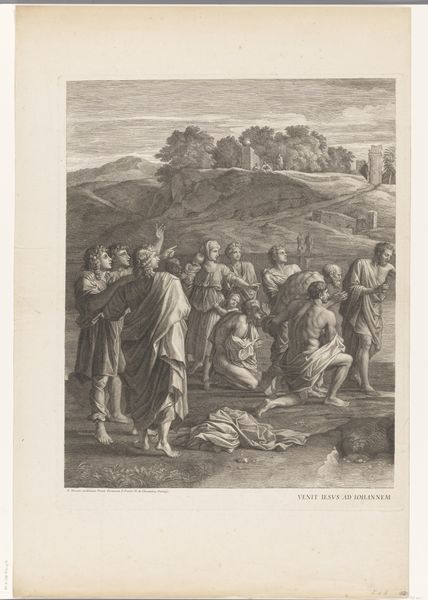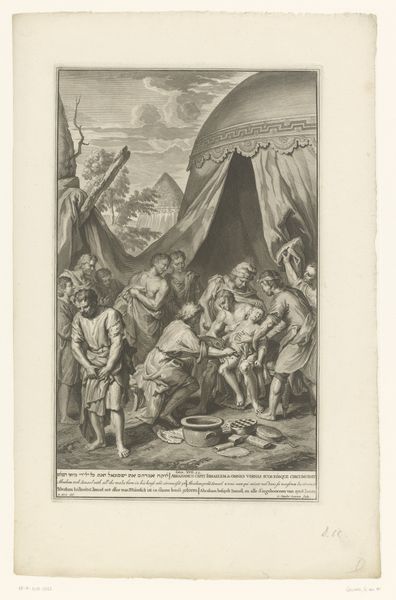
Ontmoeting tussen Calasiris en enkele Fenicische koopmannen tijdens een feest 1623
0:00
0:00
print, engraving
#
baroque
# print
#
old engraving style
#
landscape
#
figuration
#
history-painting
#
engraving
Dimensions: height 151 mm, width 95 mm
Copyright: Rijks Museum: Open Domain
Editor: This engraving, "Ontmoeting tussen Calasiris en enkele Fenicische koopmannen tijdens een feest," made in 1623 by Michel Lasne, depicts a meeting or banquet. The landscape background is interesting, contrasting with the group dining. It all feels quite staged. How would you interpret this work? Curator: This print allows us to consider the interplay between commerce, power, and exoticism in the 17th century. Notice the clear distinction in how the figures are represented – some are active, perhaps engaged in trade, while others are feasting. What might the artist be suggesting about the roles of different cultures here? Editor: So it’s more than just a banquet scene; it's about the interaction between different social groups and perhaps the dynamic of trade. Curator: Precisely. And the “stage” you noticed may well be the artist emphasizing the constructed nature of this interaction, or perhaps their understanding of the East itself. These staged or imagined scenes of encounters shaped European understanding of the rest of the world. Are we seeing reality or an idealized image of trade relations, do you think? Editor: It leans towards the idealized, or at least a carefully controlled representation. It makes you think about how these types of images impacted societal views on these interactions. I see the politics of imagery at work! Curator: Indeed. The artist seems to be playing with perceptions and biases through his art. The setting isn't simply a backdrop but another active element shaping this encounter. Considering how power relations are visualized and disseminated via prints offers great insight into the history of our perceptions. Editor: It's amazing how much can be unpacked from what at first seemed like a straightforward scene. Curator: Precisely, by analyzing the cultural and political climate of its time, even a simple encounter in a print opens up new possibilities in understanding its meaning. I certainly learned more about constructed social and political encounters, and their possible biases, after discussing the print.
Comments
No comments
Be the first to comment and join the conversation on the ultimate creative platform.
